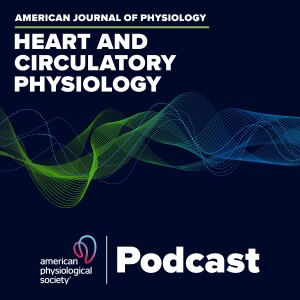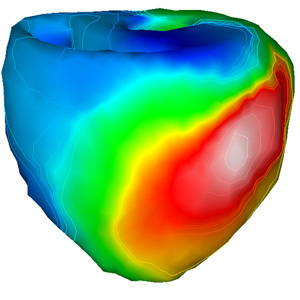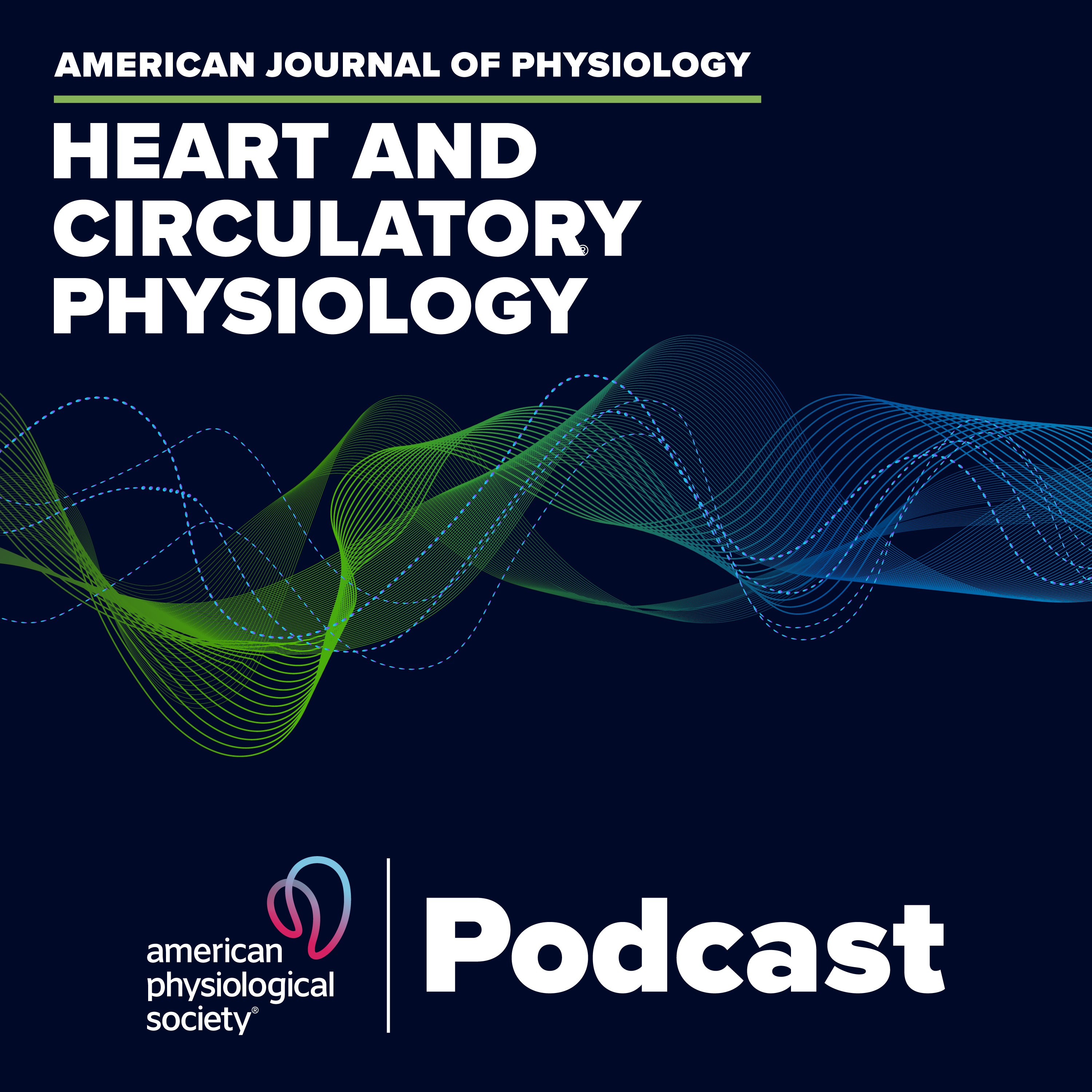Episodes

Tuesday May 17, 2016
Tuesday May 17, 2016
What is the link between mutations in delta sarcoglycans and dilated cardiomyopathy? In our latest podcast, Guest Editor Noah Weisleder (Ohio State University) interviews lead author Daniel Michele (University of Michigan) and content expert Aaron Beedle (University of Georgia) about this very question, digging deeper into the elegant study by Campbell et al which reveals that two different delta sarcoglycan mutations indeed have a dominant negative effect on myocyte membrane mechanical stability. Using a variety of experimental approaches—cellular, biochemical and functional assays—Dr. Michele and co-authors help to uncover the relationship between these genetic mutations and the presentation of the dilated cardiomyopathy phenotype. Learn more about how a personal connection to muscular dystrophy acted as a springboard for this study, part of our Call for Papers on Plasma Membrane Integrity in Cardiovascular Physiology and Pathophysiology. How do delta sarcoglycans guard against sarcolemma instability, and how does membrane repair differ from membrane integrity in dilated cardiomyopathy? Listen and find out.
Matthew D. Campbell, Marc Witcher, Anoop Gopal, Daniel E. Michele Dilated cardiomyopathy mutations in δ-sarcoglycan exert a dominant-negative effect on cardiac myocyte mechanical stability Am J Physiol Heart Circ Physiol, published May 1, 2016. DOI: 10.1152/ajpheart.00521.2015

Monday May 02, 2016
Aging Impairs Endothelial Ca2+ Signaling
Monday May 02, 2016
Monday May 02, 2016
We know that as we age, blood vessels become less effective at getting blood where you need it, when you need it. Intracellular calcium signaling is a key step in regulation of vascular function. Could defects in calcium signaling between the endothelium and smooth muscle cells of microvessels contribute to aging-related vascular dysfunction? Listen as Guest Editor Akos Koller (New York Medical College, Valhalla, and University of Physical Education, Budapest) interviews first author Erika Boerman (University of Missouri - Columbia) and topic expert Jonathan Ledoux (Montreal Heart Institute) about an innovative Rapid Report by Boerman and colleagues. Using an intravital microvascular preparation, Boerman et al combined several innovative techniques from other laboratories, including GCamp 2 mice developed as a calcium biosensor for measuring calcium pulsars, to explore calcium signaling in holes within the internal elastic lamina between the endothelium and smooth muscle. If the number of these holes reduces with aging, is there a corresponding decreased capacity for myoendothelial calcium signaling, which then can contribute to age-related microvascular dysfunction? Listen and learn.
Erika M. Boerman, Jesse E. Everhart, Steven S. Segal Advanced age decreases local calcium signaling in endothelium of mouse mesenteric arteries in vivo Am J Physiol Heart Circ Physiol, published May 1, 2016. DOI: 10.1152/ajpheart.00038.2016.

Monday Apr 18, 2016
CpG DNA and Maternal Vascular Function
Monday Apr 18, 2016
Monday Apr 18, 2016
Preeclampsia affects nearly 10 million pregnancies worldwide every year, and is still a major cause of maternal death globally, particularly in developing countries. So why isn’t more known about the initiation of gestational hypertension? In their recent work published in AJP-Heart and Circulatory Physiology, Goulopoulou et al seek to change that. Listen as Associate Editor Nancy Kanagy interviews Stella Goulopoulou (University of North Texas Health Science Center) and leading expert Lawrence Reynolds (North Dakota State University) about the work by Goulopoulou and co-authors, which used an innovative mitochondrial DNA analog, ODN 2395, to induce activation of toll-like receptor 9 and stimulate maternal pregnancy hypertension in rats. Does placenta cell death released into the maternal circulation trigger the innate immune system to induce a systemic inflammatory response resulting in pregnancy-induced hypertension? Could CpG oligonucleotides from bacterial infections play a role in preeclampsia? Listen and find out.
Styliani Goulopoulou, Camilla F. Wenceslau, Cameron G. McCarthy, Takayuki Matsumoto, R. Clinton Webb Exposure to stimulatory CpG oligonucleotides during gestation induces maternal hypertension and excess vasoconstriction in pregnant rats Am J Physiol Heart Circ Physiol, published April 15, 2016. DOI: 10.1152/ajpheart.00834.2015.

Thursday Apr 07, 2016
Cardiac Adaptations During a Mountain Ultra-Marathon
Thursday Apr 07, 2016
Thursday Apr 07, 2016
Can a mountain ultra-marathon—arguably the most grueling and strenuous form of extreme exercise—be good for your heart? That’s just what we discuss in this latest podcast. Listen as Editor-in-Chief Dr. Irv Zucker interviews lead author Stéphane Nottin (Montpellier I University & Nimes University Hospital Center) and leading expert Michael Joyner (Mayo Clinic) about the work Nottin and colleagues undertook measuring the effects of this type of extreme exercise on the cardiac function of runners before, during, and after the world's most challenging mountain ultra-marathon Tor des Géants in the Italian Alps. While traipsing echocardiographic equipment around the Alps is no small feat, the results of Nottin and co-authors were even more interesting. As opposed to races of shorter duration or less extreme conditions (a typical marathon course, for example), post-race cardiac function improved in the ultra-marathoners. What role does exercise intensity play in these measurements of improved cardiac function? Why does end-diastolic volume increase at the end of the race, and does an increase in plasma volume explain the increase in gastric function in racers? Listen to find out.
Claire Maufrais, Grégoire P. Millet, Iris Schuster, Thomas Rupp, Stéphane Nottin Progressive and biphasic cardiac responses during extreme mountain ultra-marathon Am J Physiol Heart Circ Physiol, published February 26, 2016. DOI: 10.1152/ajpheart.00037.2016.

Monday Mar 28, 2016
Astronaut Arterial Stiffness and Insulin Resistance
Monday Mar 28, 2016
Monday Mar 28, 2016
Is exercise really the best medicine…in space? In this fascinating podcast, Consulting Editor David Gutterman (Medical College of Wisconsin) interviews lead author Richard Hughson (University of Waterloo) and content expert Walter Wray (University of Utah) about the latest work by Hughson and co-authors on how zero gravity alters vascular stiffness and insulin resistance, particularly in vessels in the head and neck. This latest work from Hughson and colleagues has important implications for long-term spaceflight, like missions to Mars and space station inhabitation. In addition, comparisons to bed rest studies make the case that acute changes in vascular stiffness may be treated with exercise, but how much is enough? With the recent completion of NASA astronaut Scott Kelly’s year in space, this podcast is not only timely, it is literally “out of this world.” Listen now.
Richard L. Hughson, Andrew D. Robertson, Philippe Arbeille, J. Kevin Shoemaker, James W. E. Rush, Katelyn S. Fraser, Danielle K. Greaves Increased postflight carotid artery stiffness and inflight insulin resistance resulting from 6-mo spaceflight in male and female astronauts Am J Physiol Heart Circ Physiol, published March 1, 2016. DOI: 10.1152/ajpheart.00802.2015.

Monday Mar 14, 2016
Gender Differences in Acute Decompensated Heart Failure
Monday Mar 14, 2016
Monday Mar 14, 2016
Do we need to better understand gender differences in order to understand the pathophysiology of heart failure? Yes, according to a new study by Nakada et al. In the English version of this dual language podcast, listen as Associate Editor Masafumi Kitakaze interviews lead author Yoshihiko Saito (Nara Medical University) and guest expert Tomoko Ichiki (Mayo Clinic) about the work by Saito and colleagues, which analyzed the differences in prognostic power of plasma B-type natriuretic peptide (BNP) levels in men and women, as well as gender differences in age and ejection fraction distribution among heart failure patients. How do the results of Saito and colleagues, which clearly show that the pathophysiology of heart failure differs between men and women, impact potential clinical treatment strategies? Listen and learn more.
Yasuki Nakada, Rika Kawakami, Tomoya Nakano, Akihiro Takitsume, Hitoshi Nakagawa, Tomoya Ueda, Taku Nishida, Kenji Onoue, Tsunenari Soeda, Satoshi Okayama, Yukiji Takeda, Makoto Watanabe, Hiroyuki Kawata, Hiroyuki Okura, Yoshihiko Saito Gender Differences in Clinical Characteristics and Long-Term Outcome in Acute Decompensated Heart Failure Patients with Preserved and Reduced Ejection Fraction Am J Physiol Heart Circ Physiol, published online January 8, 2016, DOI: 10.1152/ajpheart.00602.2015.

Monday Mar 14, 2016
Monday Mar 14, 2016
Do we need to better understand gender differences in order to understand the pathophysiology of heart failure? Yes, according to a new study by Nakada et al. In the Japanese version of this dual language podcast, listen as Associate Editor Masafumi Kitakaze interviews lead author Yoshihiko Saito (Nara Medical University) and guest expert Tomoko Ichiki (Mayo Clinic) about the work by Saito and colleagues, which analyzed the differences in prognostic power of plasma B-type natriuretic peptide (BNP) levels in men and women, as well as gender differences in age and ejection fraction distribution among heart failure patients. How do the results of Saito and colleagues, which clearly show that the pathophysiology of heart failure differs between men and women, impact potential clinical treatment strategies? Listen and learn more.
Yasuki Nakada, Rika Kawakami, Tomoya Nakano, Akihiro Takitsume, Hitoshi Nakagawa, Tomoya Ueda, Taku Nishida, Kenji Onoue, Tsunenari Soeda, Satoshi Okayama, Yukiji Takeda, Makoto Watanabe, Hiroyuki Kawata, Hiroyuki Okura, Yoshihiko Saito Gender Differences in Clinical Characteristics and Long-Term Outcome in Acute Decompensated Heart Failure Patients with Preserved and Reduced Ejection Fraction Am J Physiol Heart Circ Physiol, published online January 8, 2016, DOI: 10.1152/ajpheart.00602.2015.

Monday Mar 07, 2016
Sitting and Endothelial Dysfunction
Monday Mar 07, 2016
Monday Mar 07, 2016
Is a stand-desk healthier for your arteries? Listen to this intriguing new podcast about endothelial dysfunction due to a reduction in blood flow and shear stress following prolonged periods of sitting. Associate Editor Nancy Kanagy (University of New Mexico School of Medicine) interviews lead author Jaume Padilla (University of Missouri) and guest expert Lee Stoner (Massey University, Wellington, New Zealand) about the work by Restaino et al, which utilized local heating to alleviate the normal reduction in shear stress that occurs with prolonged sitting in healthy male subjects. Did the heating protocol prevent post-sitting decreases in endothelium dilation? What do Padilla and colleagues speculate is the primary mechanistic pathway by which reduction in blood flow in shear stress results in an impairment in endothelium-dilation? What are the public health ripple effects here, in particular for spinal cord injury patients and people suffering from peripheral artery disease? We tackle these questions and more. Listen now.
Robert M. Restaino, Lauren K. Walsh, Takuma Morishima, Jennifer R. Vranish, Luis A. Martinez-Lemus, Paul J. Fadel, Jaume Padilla Endothelial dysfunction following prolonged sitting is mediated by a reduction in shear stress Am J Physiol Heart Circ Physiol, published March 1, 2016, DOI: 10.1152/ajpheart.00943.2015.

Tuesday Feb 23, 2016
Development of a NRF2 Knockout Rat
Tuesday Feb 23, 2016
Tuesday Feb 23, 2016
How can we develop a deeper understanding of the regulation and activation of NRF2 in order to target therapies that depend on the inhibition of oxidative stress in a variety of disease states? Our latest podcast seeks an answer to this and more. Listen as Editor in Chief Irving H. Zucker (University of Nebraska Medical Center) interviews lead author Julian Lombard (Medical College of Wisconsin) and content expert Junie Paula Warrington (University of Mississippi Medical Center) about the innovative work by Priestley et al. Lombard and colleagues developed a NRF2 knockout rat to investigate the role of NRF2 in microvascular regulation in the context of a high-salt diet. What are the implications for the pathogenesis of hypertension? And how to “just right” levels of angiotensin 2 play a part in maintaining the NRF2 vs. oxidant stress balance? Listen and find out.
Jessica R. C. Priestley, Katie E. Kautenburg, Marc C. Casati, Bradley T. Endres, Aron M. Geurts, Julian H. Lombard The NRF2 knockout rat: a new animal model to study endothelial dysfunction, oxidant stress, and microvascular rarefaction Am J Physiol Heart Circ Physiol, published February 15, 2016. DOI: 10.1152/ajpheart.00586.2015.

Tuesday Feb 16, 2016
BRS-3 Regulation of Blood Pressure and Heart Rate
Tuesday Feb 16, 2016
Tuesday Feb 16, 2016
Just what are the contributions of bombesin-like receptor 3 to blood pressure regulation? Listen as Associate Editor Debra I. Diz (Wake Forest University School of Medicine) interviews lead author Marc Reitman (National Institute of Diabetes and Digestive and Kidney Diseases, National Institutes of Health) and content expert Amy C. Arnold (Vanderbilt University) about the work by Lateef et al., which combined the use of genetic tools—a BRS-3 knockout mouse—as well as pharmacologic tools to explore the effect of this orphan receptor on blood pressure, filling a void in the literature about the physiology of BRS-3. This podcast tackles just about everything: “uncooperative” mice, effects on baroreflex sensitivity, and the controversial subject of pharmacological interventions for the treatment of obesity. Does the absence of evidence equate to “the evidence of absence”? Listen and find out.
Dalya M. Lateef, Cuiying Xiao, Robert J. Brychta, André Diedrich, Jurgen Schnermann, Marc L. Reitman Bombesin-Like Receptor 3 Regulates Blood Pressure and Heart Rate via a Central Sympathetic Mechanism Am J Physiol Heart Circ Physiol, published online January 22, 2016, DOI: 10.1152/ajpheart.00963.2015.

